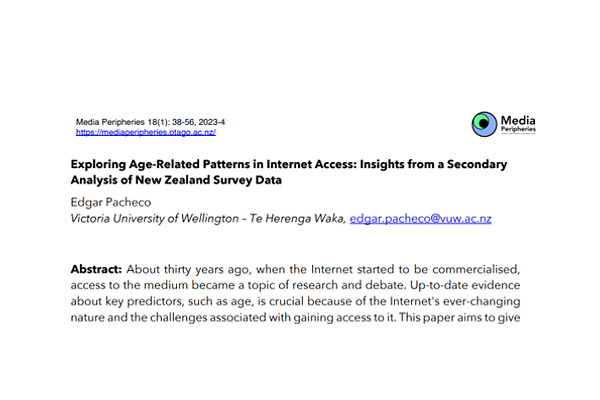Exploring age-related patterns in internet access: Insights from a secondary analysis of New Zealand survey data

Exploring age-related patterns in internet access: Insights from a secondary analysis of New Zealand survey data
Edgar Pacheco
AbstractAbout thirty years ago, when the Internet started to be commercialised, access to the medium became a topic of research and debate. Up-to-date evidence about key predictors, such age, is crucial because of the Internet's ever-changing nature and the challenges associated with gaining access to it. This paper aims to give an overview of New Zealand's Internet access trends and how they relate to age. It is based on secondary analysis of data from a larger online panel survey with 1,001 adult respondents. The Chi-square test of independence and Cramer's V were used in the analysis. The study provides new evidence to understand the digital divide. Specifically, it uncovers a growing disparity in the quality of Internet connectivity. Even though fibre is the most common type of broadband connection at home, older adults are less likely to have it and more likely to use wireless broadband, which is a slower connection type. Additionally, a sizable majority of people in all age categories have favourable opinions on the Internet. Interestingly, this was more prevalent among older people, although they report an increased concern about the security of their personal information online. The implications of the results are discussed and some directions for future research are proposed.